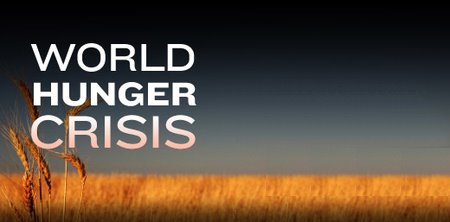World Hunger
The current period of rapid population growth will continue for at least another 50 years, according to the 2000 World Population Data Sheet of the Population Reference Bureau. By 2050, the world is expected to add 3 billion more people to reach a total of 9 billion. World population has increased at a historically high average annual rate of 1.8% since 1950. Today’s population consists of 6.7 billion of population, and about 854 million of population is hungry. World Bank estimates an additional 100 million may go hungry due to food crisis. However, cereal production has more than kept pace: It has increased from 275 kg per person in the early 1950s to 370 kg per person in the early 1980s. This change has been accompanied by improvements in a number of indicators of human well-being, such as gross output per head, infant mortality rate, life expectancy at birth, and literacy. The issue of human overpopulation has fallen out of favor among most contemporary demographers, economists, and epidemiologists. Discussing population control has become a taboo topic. Yet, this taboo has major implications for public health. The question of human overpopulation and its relationship to human carrying capacity has been controversial for over two centuries. Ecologists findings suggest that a near 50% increase in world population, allied with a doubling of gross world product per head, would by 2030 create substantial additional stresses in both local and global ecosystems. Global demand for food could easily double over the period 1990-2030, with two and a half to threefold increase in the poorest countries. Of particular concern are Asia and Africa where, over the next 50 years, plant derived food energy requirements are expected to increase by a factor of 2.3 and 5, respectively, with a more than sevenfold increase expected in some countries. Such increases in food requirements mean that we must manage constraints on the supplies of production inputs and on the environmental consequences of the use of these inputs.
The population of China has reached an amazing 1.4 billion; that’s 6 times the amount of people in America. These statistics demonstrate China’s major overpopulation problem, which stretches the country’s resources to the limit. To solve this issue the Chinese people have to greatly lower the high level of the birth rate. A one-child policy has been introduced to help resolve the problem. The policy rewards people with money and status and is in effect all over China.


